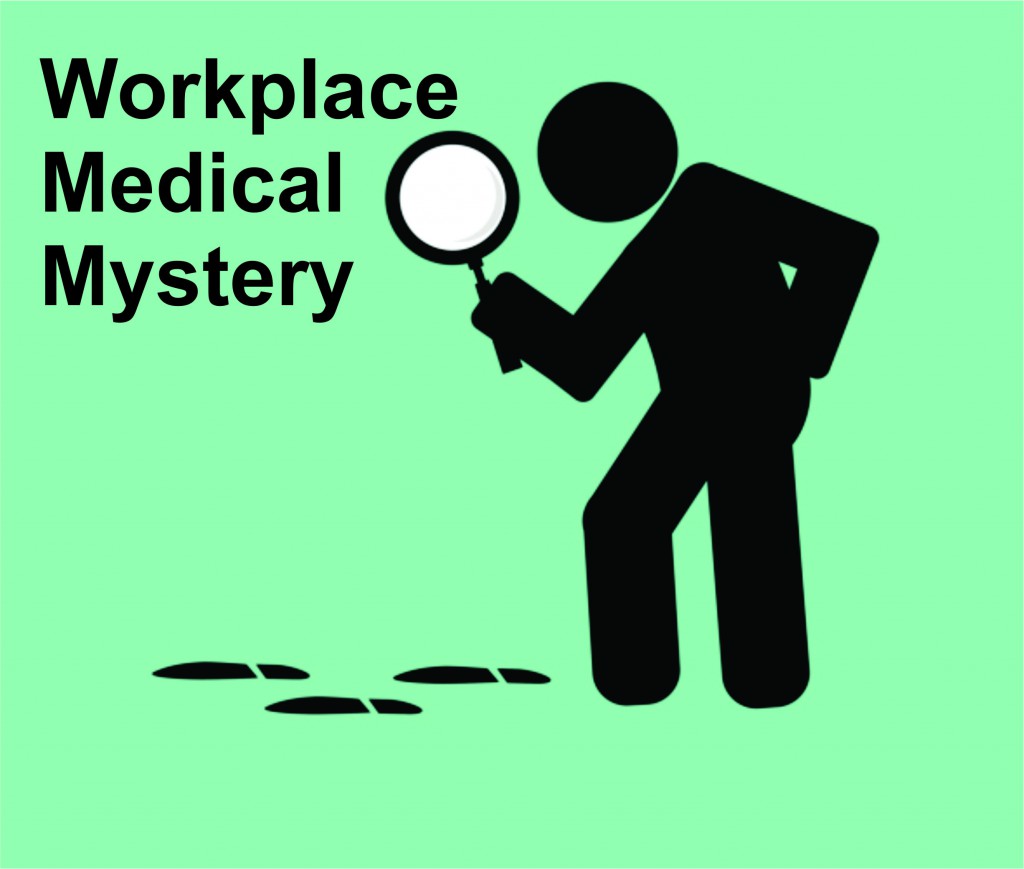Workplace Medical Mystery: Unknown Illness in Worker at Greeting Card Plant
Posted on by Camilla works at a plant that produces greeting cards and ribbon products. She started working at the plant over 15 years ago when production first started. The plant is open around-the-clock for three shifts with workers in multiple departments across two floors of the building. Camilla worked in different departments over the years but spent the most time on the morning shift in greeting card production. She’s always loved holidays, and her favorite part of her job is seeing the new designs come through the machines.
Camilla works at a plant that produces greeting cards and ribbon products. She started working at the plant over 15 years ago when production first started. The plant is open around-the-clock for three shifts with workers in multiple departments across two floors of the building. Camilla worked in different departments over the years but spent the most time on the morning shift in greeting card production. She’s always loved holidays, and her favorite part of her job is seeing the new designs come through the machines.
Camilla carpools to the plant with her friend, Valentina, whom she met when they first started working together in bow manufacturing and packaging. Camilla prefers driving her own car since riding with Valentina, who smokes, causes Camilla’s asthma to flare. On their way to work this morning, Valentina forgot her respirator, so Camilla gave her one that she had in her car. Camilla insisted that she never used it and that Valentina should take it rather than turning around. The plant gave Camilla the respirator when she moved from bow manufacturing to greeting card production, but she didn’t like to wear it because it made her feel short of breath.
Once they arrived at work, Camilla joined her coworkers in the small foil and die cutting area of the plant. When greeting cards are produced, the process starts at printers and then, depending on the design, moves to conveyor lines that apply flock (tiny nylon fibers) onto adhesive-coated cards. Then the cards move through card-cleaning machines where excess flock is removed. Next, the cards move to one of four small machines where foil accents are applied. After the cards move through the machines, production finishes with page insertion, folding, and packaging.
Between production runs, Camilla uses compressed air to clean the conveyor lines and machines. She reaches into the flock cleaning machine to remove any residue from the conveyor lines and then sprays the small foil machinery to remove dust and debris. Before the next production run begins, there is a plant-wide break for workers. Valentina asked Camilla if she was going to join her coworkers outside while they took a smoke break. Camilla usually joined them to walk laps around the parking but, today, she said no because she was worried that the chilly weather would make her lingering cough worse.
At the end of their shift, Camilla met Valentina, and they used compressed air to quickly remove any dust from their clothes to prevent getting it in the car. Camilla dropped off Valentina and reminded her that she couldn’t carpool the next day because she had a doctor’s appointment.
The next day, Camilla visited Dr. Gallagher, who had diagnosed her with asthma a few years ago. Dr. Gallagher asked if she had any symptoms other than the lingering cough and shortness of breath. Camilla explained that her eyes had been irritated lately, but it didn’t seem related to her other symptoms. Dr. Gallagher listened to her breathing and noticed some wheezing. Camilla thought it was because of the cold weather, but Dr. Gallagher worried that her asthma had worsened and ordered tests to see what was happening with Camilla’s lungs.
What do you think Camilla is suffering from? If you think you know, tell us in the comment section below. Check back on Friday for the next installment of Workplace Medical Mysteries to see what is making Camilla sick.
Emily Kirby, BPH, is a Health Communication Specialist in the NIOSH Office of Communication and Research to Practice.
Rachel Bailey, DO, MPH, is a Medical Officer in the NIOSH Respiratory Health Division.
Lew Radonovich, MD, is the Deputy Director in the NIOSH Respiratory Health Division.
This blog is part of the NIOSH Workplace Medical Mystery Series. The names and certain personal details of the characters are fictitious and do not represent an actual person or persons.
Posted on by

